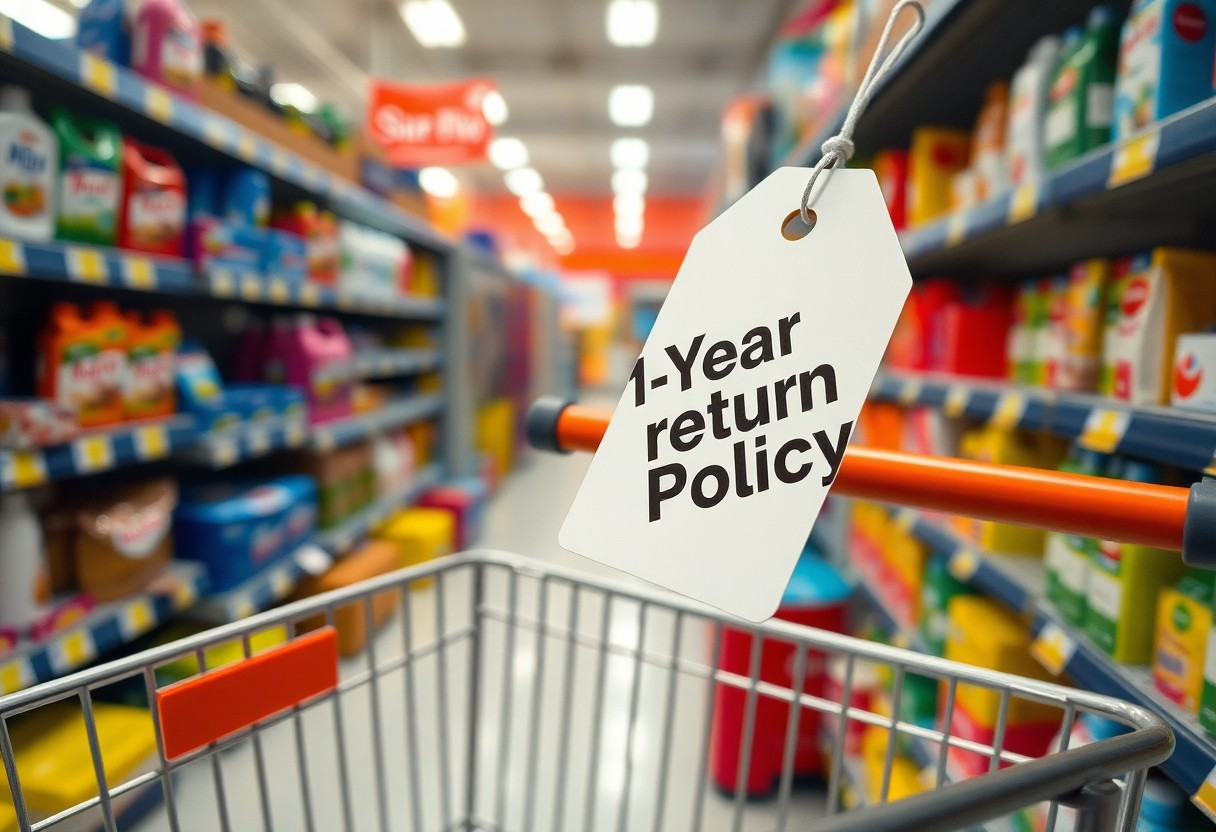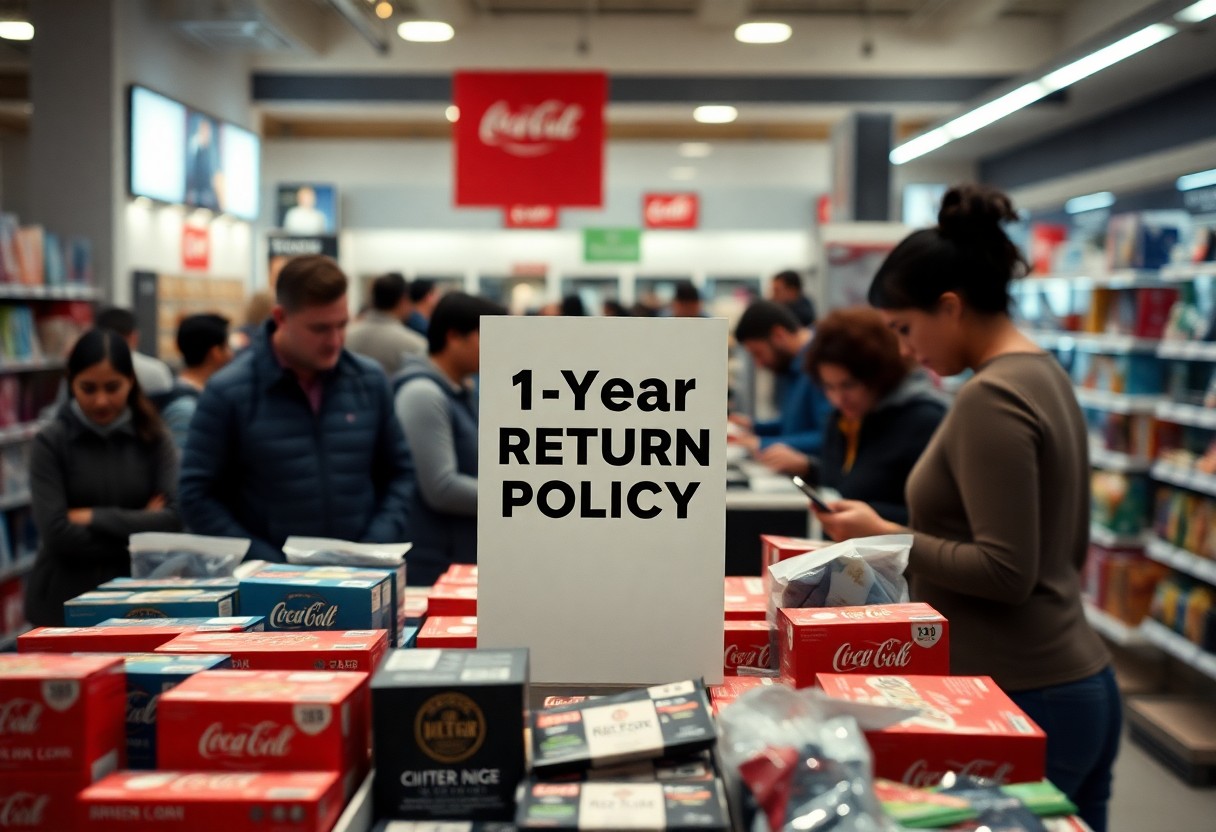With a one-year return policy, you have ample time to evaluate your purchase and ensure it meets your expectations. This policy often provides you with the security of being able to return items that may not work as intended or those that could be defective. However, be aware of specific conditions and timeframes for processing returns, as failure to comply can lead to a denial of your request. Understanding the nuances of this policy empowers you to make informed decisions and fosters a positive shopping experience.
The Evolution of Return Policies: A Year in Review
Historical Context of Return Policies
Return policies have transformed significantly over the decades, evolving from rigid systems that often left customers unsatisfied to more flexible frameworks that prioritize consumer rights. In the early 1960s, many retailers enforced stringent rules, allowing returns solely for defective products and often requiring detailed proof of purchase. These policies not only strained customer relationships but also limited retailers’ opportunities to build brand loyalty. As consumer rights began gaining traction in the late 20th century, you witnessed a gradual shift towards more customer-friendly return options, setting the stage for the modern landscape.
As e-commerce surged in the late 1990s and early 2000s, the historical context of return policies began to shift dramatically. Online retailers recognized the need to compete for consumer trust, frequently offering generous return windows to alleviate the uncertainties associated with online shopping. You may recall how companies like Amazon pioneered this movement with their “no questions asked” return policy, demonstrating that accommodating returns could enhance customer satisfaction and retention.
The Shift Towards Extended Return Windows
The trend toward extended return windows reflects a broader understanding of consumer behavior and the competitive landscape. Many brands now offer return periods stretching beyond the traditional 30 days, with some retailers, such as REI, providing a full year for returns. This change acknowledges that purchasing decisions can take time, especially for larger investments or seasonal items. You benefit from having the flexibility to assess whether a product truly meets your needs, leading to a more thoughtful and less pressured buying experience.
Extended return windows also serve as a strategic advantage in a crowded retail market. Statistics show that consumers are 62% more likely to complete a purchase when they are offered an extended return policy. Not only does this policy reduce the fear of buyer’s remorse, but it also fosters brand loyalty, encouraging customers to return for future purchases with a sense of security. Retailers are leveraging this insight, adjusting their policies to align with the evolving expectations of consumers who demand more from their shopping experiences.

Customer Perceptions: The Impact of a One-Year Return Policy
Trust and Customer Loyalty Enhancement
A one-year return policy directly influences your perception of a brand’s reliability. Knowing that you have a full year to return a product can foster a sense of security in your purchasing decision. This extended timeframe signals to you that the brand has confidence in its products, which might enhance your trust. For example, companies like REI and Zappos have built reputations around generous return policies, allowing you to shop with greater peace of mind.
Additionally, such policies can significantly boost your loyalty to a brand. When you feel secure and supported in your purchases, you are more likely to return for future transactions. A study published in the Journal of Retailing indicated that customers exposed to favorable return policies had a 20% higher likelihood of making repeat purchases within a year compared to those with shorter return windows.
Statistical Analysis of Return Rates
The implementation of a one-year return policy often correlates with altered return rates. Retailers that offer longer return periods typically observe a 10% reduction in returns compared to those with standard 30-day policies. This phenomenon stems from your increased consideration before purchasing, knowing you have ample time to assess the item once received.
More importantly, tracking the relationship between return policies and purchase behavior reveals striking insights. Brands adopting one-year return policies report improved customer satisfaction scores, often leading to enhanced sales performance. For instance, a well-known fashion retailer recorded a 15% increase in annual revenue after extending its return policy from 30 to 365 days, illustrating the tangible benefits of this strategy.

The Financial Implications of a Generous Return Policy
Balancing Profit Margins and Customer Satisfaction
A generous return policy can enhance customer satisfaction significantly, leading to increased loyalty and repeat business. You might find that customers are more willing to make a purchase if they know they can return an item hassle-free within a year. However, this positive experience can pressure your profit margins, particularly if the rate of returns becomes excessive. Monitoring your return metrics regularly is necessary to find a balance between offering a flexible policy and protecting your revenue.
Implementing a one-year return policy requires a strategic approach to inventory management. You need to account for the potential financial losses from returned products while leveraging the increased sales resulting from greater customer trust. Developing a well-structured return process can mitigate costs while keeping your customers happy, ensuring that they feel valued and inclined to recommend your brand to others.
Case Studies: Brands That Benefited from Long Return Periods
Several brands exemplify how a generous return policy can positively impact business outcomes. For instance, the outdoor apparel retailer Patagonia, promotes a 365-day return policy, enhancing customer loyalty and driving sales. Reports indicate their commitment to sustainability aligns with customer values, resulting in a 25% increase in sales over the last few years. Another example is Zappos, which offers an unlimited return window on shoes, leading to a loyal customer base and increasing their market share significantly.
- Patagonia: 365-day return policy, resulting in a 25% increase in sales post-implementation.
- Zappos: Unlimited return policy led to a 750% growth in sales after just a few years.
- Nordstrom: No formal time limit on returns, contributing to their high customer satisfaction ratings and brand loyalty.
- LL Bean: Previously infinite return policy saw an increase in -700% unwanted returns resolved via customer service.
These case studies illustrate that long return periods can transform a brand’s relationship with its customers. With Patagonia, you see how an environmental stance and a flexible policy elevate not just sales but also strengthen brand loyalty. Zappos and Nordstrom showcase how customer-centric approaches enhance market competitiveness. By analyzing these examples, you can identify patterns that align with your business model to improve your return policy strategically.
Crafting an Effective One-Year Return Policy
Key Elements of a Comprehensive Return Policy
Your return policy should encompass several key elements to foster trust and streamline the process for customers. Clear timeframes are crucial; specify that customers can return items within a full year of purchase. Additionally, outline any necessary conditions for returns, such as whether items must be unopened, in original packaging, or accompanied by a receipt. Providing these details not only sets expectations but also reduces confusion during the return process.
Incorporating straightforward language throughout your policy enhances readability. Use bullet points or numbered lists for easy reference, detailing the steps customers must follow to initiate a return. This could include who to contact, how to package the item, and where to send it. By presenting information in a structured format, you minimize the likelihood of misunderstandings and keep your customers informed.
Communicating Policies Clearly to Customers
Effective communication of your return policy can significantly impact customer satisfaction and retention. Placing your policy in prominent locations, such as your website’s main navigation bar, checkout pages, and in-store signage, ensures that customers can easily access this information. It’s beneficial to utilize visual aids like infographics that summarize your return process, making it user-friendly.
Highlighting your return policy in marketing materials also reinforces customer trust. Make sure to provide examples, such as testimonials from satisfied customers who successfully navigated your return process. This not only serves as social proof but also reassures potential buyers about the risk-free nature of their purchases. Leveraging FAQs that address common return questions can further demystify the process and enhance customer confidence.
Challenges and Limitations of an Extended Return Policy
Managing Inventory and Return Logistics
Implementing a one-year return policy presents unique challenges related to inventory management and return logistics. With longer return windows, you may experience higher levels of returned merchandise, which can disrupt your inventory levels. For instance, if 15% of items are returned, your stock levels may plummet unexpectedly, impacting your ability to fulfill new orders. Additionally, the logistics of processing these returns can strain your operational resources, necessitating a robust system to manage both incoming returns and outgoing new sales efficiently.
Handling the flow of returned products often requires an established framework for inspection, refurbishment, and restocking. If you don’t have a streamlined process, returned items may sit in your warehouse, leading to increased holding costs and potential depreciation in their value. For example, electronics retailers have seen significant losses due to outdated stock that accumulates during extended return periods, highlighting the importance of an organized return logistics strategy.
Analyzing Return Abuse and Mitigation Strategies
Return abuse can significantly undermine the advantages of an extended return policy. Patterns of misuse, such as customers exploiting the return window to cycle through products (often called “wardrobing”), necessitate close analysis of return data. You may find yourself facing a steep decline in profitability if customers frequently take advantage of lenient policies without genuine intentions of keeping items, leading to inflated return rates and added costs of processing those returns.
Implementing mitigation strategies is imperative to curbing return abuse. One effective method is to track customer return behavior and flag accounts demonstrating suspicious activity. For instance, using analytics tools can help you identify patterns that suggest potential abuse, allowing you to create limits or conditions for repeat offenders while ensuring genuine customers still benefit from your policy.
Moreover, adjusting your return policy’s terms based on return frequency or product categories can provide a balanced approach. For example, you might require tags to remain attached on clothing items or limit returns on seasonal goods after a set period. This not only encourages responsible purchasing but also safeguards your bottom line. By thoughtfully analyzing and adapting your policy, you can maintain the integrity of your return process while supporting your loyal customers.
Summing up
Considering all points, a one-year return policy provides you with the assurance that your purchase is protected for an extended period. It allows you to assess the product thoroughly within a reasonable timeframe, ensuring it meets your needs and expectations. This kind of policy empowers you to make informed purchasing decisions, knowing that you have the flexibility to return items that may not align with your requirements.
Additionally, a generous return policy reflects a commitment to customer satisfaction from retailers, giving you confidence in your shopping experience. As you navigate your purchases, a year-long return window can significantly enhance your peace of mind, enabling you to try new products without fear of being stuck with items that do not fulfill your needs. This level of customer service fosters loyalty and encourages you to explore more options in the market.
FAQ
Q: What is the return policy for items purchased within one year?
A: Items purchased within one year can be returned for a full refund or exchange, provided they are in their original condition with all tags attached. Proof of purchase is required.
Q: Are there any exceptions to the one-year return policy?
A: Yes, certain items such as personalized products or clearance items may not be eligible for return. Always check the specific product details before purchasing.
Q: How do I initiate a return under the one-year policy?
A: To initiate a return, contact customer service with your order details and reason for return. You will receive instructions on how to send back the item.